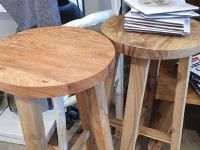How to Grow Vegetables
A 6 minute read by Peter Worsp
There is nothing quite like the taste of fresh vegetables straight from the garden. Add to this the satisfaction and sense of achievement, the savings, the knowledge that your vegetables are free of nasty pesticides and you have some very powerful reasons for growing your own vegetables. This article and our planting plan ensures you have a continuous supply of fresh vegetables year round, even from a small space.
Key Points for Success
- Warm, sunny site
- Free draining soil with compost added
- Quality seeds or plants
- Water during dry periods
- Planned succession of crops
Selecting the Site
- Vegetables will grow best in a warm sunny position
- They will not grow and yield in shade or where they have to compete for light and moisture
- Shelter from strong winds is also a benefit
- The size of the vegetable garden depends on the size of your family and the vegetables required
The Soil
- Vegetables require a free draining soil rich in organic matter (compost)
- In clay soils the vegetable plot should be raised or built up some 15cm above the surrounding soil to ensure good drainage
The Seed
- Modern hybrid varieties of vegetables are higher yielding, better tasting, more disease resistant and more uniform than old varieties
- Seek advice from our garden adviser on the best varieties for your area and the season
- We recommend Yates seed which has the biggest range and best meets the needs of New Zealand gardeners
The Plants
- In many cases it is more convenient to buy plants than to raise seeds
- It saves time, and often only a small number of plants are required
- The same principle applies as for seed, buy quality
- Good seedlings should have 6-8 true leaves and be 5-8 cm high
- Hybrids will cost a little more, but are worth it
The Seasons
Most vegetables prove disappointing if grown out of season.
- Cool season vegetables grow best at temperatures of 10 to 20°C, but can tolerate colder. This group includes broad beans, broccoli, brussels sprouts, cabbage, cauliflower, onions, peas, spinach and turnips
- These cool-season vegetables are best planted February to September for harvesting May to December
- Warm season vegetables grow best at temperatures above 20°C. They grow poorly in cold weather and are susceptible to frost. This group includes beans, capsicum, eggplant, potato, sweet corn, kumara, tomato and all the curcubit vine crops
- They are planted October to February for harvesting December to May
- There is a third group of vegetables which are intermediate and grow best at temperatures of 15 to 25°C. This group includes beetroot, cabbage, carrot, celery, leek, lettuce, parsnip, radish and silver beet. Many of these can be grown in cool or warm conditions, but the correct variety for the season must be chosen or they may bolt to seed
Planning a Succession
Beginners often make the mistake of planting up a whole garden in October. All the crops are then ready for harvesting at the same time in early January just as the family goes away on holiday.
- For a steady continuous supply of vegetables it is best to plan requirements and sow little and often
- At the same time make use of the season changes and rotate crops
- A plot system or a narrow garden with short rows often makes this easier to manage
Our Vegetable Planning guide will help ensure a continuous harvest of season vegetables through out the year.
Watering
- During dry weather it is important to keep vegetables actively growing by regular watering
- If they suffer moisture stress they will bolt to seed
- Refer to our page on Watering for more detail
Feeding
- At the beginning of spring apply a dressing of lime. Work this into the soil and leave for a week, then add Tui General or Vegetable Food and work this into the soil
- When transplanting it is a good idea to water the seedlings with Tuil Seaweed Solution
- Regular feeding with Thrive, Phostrogen or iCan Fast Food is beneficial for fast growing crops such as lettuces and tomatoes
Making Best Use of Space
- Many sections or backyards today are small with limited scope for the vegetable garden. However, with careful planning it is still possible to grow a range of vegetables maturing at different times to provide near continuous supply. Large pots offer another alternative for small spaces
- Another space saving technique is to introduce vegetables into the ornamental garden, potager style
- Hedges of sweet corn, or climbing beans on a fence, blocks of lettuce, carrots, onions, cabbages, and leeks for contrasting foliage. Try novelty vegetables such as multicoloured silver beet, yellow tomatoes, yellow and red peppers
Dividing Up the Space
- Some vegetables such as potatoes, courgettes, buttercup or pumpkins, sweet corn and broad beans take a lot of space and are best grown in a separate area where they are allowed space to spread without shading or smothering smaller plants
- Growing in plots rather than rows often works best for the smaller plants such as lettuces, carrots, onions, leeks.




